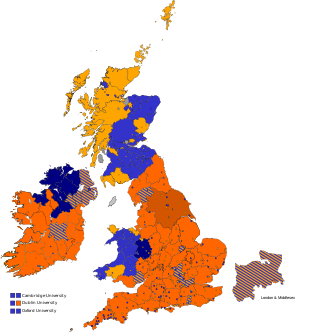Top Qs
Timeline
Chat
Perspective
Yorkshire (UK Parliament constituency)
Parliamentary constituency in the United Kingdom, 1801–1832 From Wikipedia, the free encyclopedia
Remove ads
Yorkshire was a constituency of the House of Commons of the Parliament of England from 1290, then of the Parliament of Great Britain from 1707 to 1800 and of the Parliament of the United Kingdom from 1801 to 1832. It was represented by two Members of Parliament, traditionally known as Knights of the Shire, until 1826, when the county benefited from the disfranchisement of Grampound by taking an additional two members.
Remove ads
The constituency was split into its three historic ridings, for Parliamentary purposes, under the Reform Act 1832. Each riding returned two MPs. The county was then represented by the Yorkshire East Riding, Yorkshire North Riding and Yorkshire West Riding constituencies.
Remove ads
Boundaries
Yorkshire is the largest of the historic counties of England. The constituency comprised the whole county. Yorkshire contained several boroughs which each independently returned two members to Parliament. These were Aldborough, Beverley, Boroughbridge, Hedon, Kingston upon Hull, Knaresborough, Malton, Northallerton, Pontefract, Richmond, Ripon, Scarborough, Thirsk and York.
Members of Parliament
Elections
See also
References
Wikiwand - on
Seamless Wikipedia browsing. On steroids.
Remove ads

